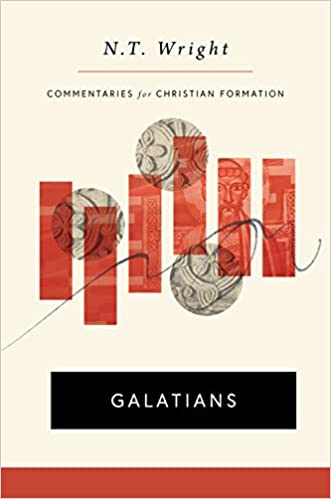Q. One of the places where I think you and I do disagree somewhat significantly is whether or not the new covenant is about covenant renewal (ala Deut. 30 etc.) or not. My answer would be – Paul says it is not. He’s talking about a genuinely new covenant that contrasts with the Mosaic one in various regards (ala Gal. 4, 2 Cor. 3). Even for Jews in Christ this is not about restoration of something that existed previously, it’s about a fresh new start, on the same basis Gentiles have it— due to the mercy of God, by grace through faith in the faithful one, Christ, one is saved. One of the reasons I’ve become even more convinced this is the right reading of Paul and Hebrews etc. is because of a recent excellent doctoral dissertation done at Asbury about the meaning of the use of ‘new’ language in Jerm 31, and in Isa. 40-66. I will let her speak for herself in the following para. as I would like to get your reaction to her reading of these key OT texts. She has convinced me at least.
In a recent doctoral dissertation on the use of the term ‘hadash’ in the OT, Dr. Deborah Endean, after looking at every single reference to that adjective in the OT, points out the following: “The semantic domain of ‘hadash’ represents a range of meaning and is used in the Old Testament to connote young, recent, fresh, unused, and/or formerly unknown. The difference between a previous state or stage and that which is signified as ‘new’ can only be properly determined by context, whether explicitly or implicitly, and/or additional qualifiers.11 Importantly, use of the adjective ‘hadash’denotes that which is distinctively “new” and not that which is “renewed” or “restored.” The latter expressions signify a verbal notion, which is conveyed in Hebrew through the use of a verbal form of the root.12 While this distinction need not rule out continuity with what existed (or did not exist) previously, it does suggest that use of the adjective emphasizes the quality of newness and thereby a greater degree of discontinuity with a previous state than is the case when the verbal form is employed.”1
She goes on to demonstrate that the use of this adjective in Jerm. 31’s famous prophecy about the new covenant, does not refer to a renewal or supplement to the Mosaic covenant. It refers to a genuinely ‘new’ covenant, with the emphasis on discontinuity, while there is some overlap in commandments with the Mosaic covenant. She also points out that this is why the Greek word kainos not ‘neos’ is used almost exclusively to translate ‘hadash’. Kainos normally indicates newness in kind, where as neos, refers to newness in time— ‘new as opposed to old’. Quoting A. D’Anjour she adds: “the notion of a quality of novelty or difference that arises from human intention or creation, for instance in objects that are ‘brand-new’ and ideas that appear ‘newfangled’, is more appropriately (though in practice not exclusively) expressed by kainos.”2
In that same study, Endean deals at length, and in a helpful manner with Jerm. 31.31-34, the only place in the OT that we really hear about a new covenant, as opposed to the Mosaic one. A few quoted lines are in order: “The obvious temporal distinction between the new covenant and the previous one is reflected in the two distinct time frames given for the establishment of each covenant. The new covenant is to be made in “the days [that] are coming” ( v. 31a), reiterated as “after those days” in v. 33, while the previous one was made “in/on the day” when Yahweh brought Israel/Judah out of the land of Egypt (v. 32a)….” Although scholars differ in the ways they articulate a qualitative difference between the two covenants, the discussion usually comes down to how one defines the terminology of newness, which in this case comes down to the meaning of the adjective ‘hadash’ and the phrase in which it occurs, ‘berit hadasha’ (“new covenant”). The primary question is whether the term only denotes “new” or whether it can also mean “renewed.” The answer based on this investigation thus far is that the adjective ‘hadash’ does not denote “renew” but rather, only “new”—in the sense that it did not exist previously. It does not necessarily rule out aspect of continuity, (e.g., both the previous and the new entities are “covenants”), but at the same time it clearly suggests the emphasis is on a qualitatively different entity by virtue of being “new.” Importantly, the term “renewed” is a verbal notion, and as such is related to the verbal form of ‘hadash’. As we shall see in the following chapter, the verbal form of ‘hadash’ appears only in the piel and once in the hithpael, and the verb, and only the verb, can denote the sense of “make new, renew, or renew.” It is my sense that the grammar alone is enough to justify the fact that “this covenant” (v. 33) is not a “renewed” covenant but rather a definitively “new covenant,” although I would not deny that the two covenants share certain similarities. Some might suggest that the lexical sense of ‘hadash’ as it is used in Jer 31:31 is an exception to its sense elsewhere in biblical usage and I would agree that the suggestion is not an impossibility. However, I would argue that, beyond the standard usage of ‘hadash’, the description that unfolds in vv. 31–34 clearly reinforces the idea that what is meant is a qualitatively different, radically new covenant.”3 This is indeed the most likely reading of Jerm. 31 and the famous promise about a few covenant that would differ from the Mosaic one, not least in regard to its more universal scope and internalization. She adds “Unlike a city, which can be rebuilt on its mound, or a temple, which can be restored or “renewed” on its previous foundation,178 a covenant, once it has been broken, cannot be “renewed” or made new again. If another covenant is to be in place, the only option is to “cut” a new one, which is precisely what Yahweh says he will do “in those days.”179 What follows in v. 33 and 34 are the details of the new covenant, and while I do not dismiss certain similarities between the new and the previous covenant (e.g., Yahweh will be Israel’s God, and they will be his people; v. 33d), they still do not erase the fact that “this” (v. 33) covenant is a “new” covenant and “not like the old covenant.”The differences are both explicit and striking.”4 Indeed, as she goes on to add, what is new is the indissolubility of the new covenant, unlike previous ones. One of the things most different about this new covenant is the notion of individual implanting of God’s word in all God’s people’s hearts, but also the notion of individual pardon of their sins. No longer will individuals be held responsible for the sins of the nation, nor will sin be primarily judged on a corporate and national basis. If personal pardon is the new order of the day, then the covenant cannot be broken collectively (and here she is following the important study of H. Leene, Newness in Old Testament Prophecy: An Intertextual Study. OtSt 64. Leiden: Brill, 2014).
A. Can’t of course comment on this in any detail though I will need obviously to look at it. My point would be, quite simply, that in Rom 10.6ff Paul is picking up Deuteronomy 30 – and his use of Jer and Ezek in 2 Cor 3 points the same way. Those texts were about the ‘real return from exile’, the outpouring of the spirit, the writing of the law on the heart, etc etc. SO, if this is a ‘new’ covenant, so be it, but since it is specifically predicted by Moses within the ‘covenant charter’ of Deuteronomy, esp 27—32, I don’t want to distinguish as sharply as I think you do.














